Melbourne shunned by investors despite areas of massive growth
Property investors have been deterred from investing in Melbourne by myriad government policy obstacles but segments of the market are ripe for investment.
Melbourne’s tight property market is as unpredictable as any in Australia right now but real estate experts are adamant golden opportunities exist despite misguided government policy unnecessarily poisoning the lawn for investors.
Despite economic and policy pressures, Andrew Meehan, President, Real Estate Institute Victoria (REIV), is confident there are buying and selling opportunities
“Middle Melbourne is particularly buoyant, transaction volumes remain strong and there are affordable buying opportunities in some of our beloved coastal towns.
“We expect to see this stability continue into the second half of the year,” he said.
Melbourne units delivering the capital growth
REIV released quarterly median data this week showing Melbourne units have climbed 3.2 per cent to $630,500.
The highest quarterly growth was seen in units in the eastern suburb of Mount Waverley, which climbed almost 25 per cent to $1,245,000. Million-dollar units in bayside suburbs climbed even higher, with Hampton units rising 20.1 percent to $1,105,000 and Brighton East increasing 14.9 per cent to $1,402,500.
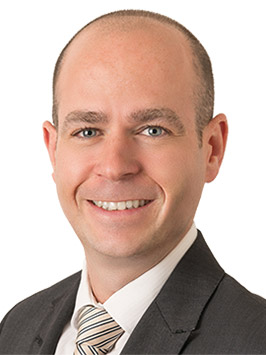
Steve Janes, Buyers Agent, aussieproperty.com
Steve Janes, Melbourne-based property consultant for aussieproperty.com, says he’s on the record as being anti-apartment but says the growth is significant.
“I believe we are in the middle of a unique apartment bubble, whereby I’m seeing up to 10 per cent growth in the one and two-bedroom apartment space.
“That is coming from a very low base and primarily driven by the rental crisis, given that first home buyers who would normally sit on the fence and not buy don’t really have a choice at the moment.
“I think the one number that’s really important is occupancy; it’s a record low pretty much across the world right now but 0.8 per cent is incredibly low and I think it’s an absolutely golden to sell because if this market does slow down, unemployment goes up, and more pressure does come then that icing on the cake will disappear immediately in the apartment sector.
“A lot of investors have been waiting 10-15 years, waiting for some hope of recovery, and I believe this window is exactly that,” Mr Janes said.
Houses prices rebounding Victorian capital
Melbourne house prices rebounded in the last quarter by 1.8 per cent, still 7.5 per cent below the city’s record high set in February 2022 and sluggish compared to Sydney where quarterly values rose 4.9 per cent, Brisbane 3 per cent and Perth 2.8 per cent, according to CoreLogic.
Middle Melbourne suburbs are excelling according to REIV data, such as Mulgrave which grew 17 per cent from $970,000 to $1,135,000, a trend also seen in Patterson Lakes ($1,116,000 from $865,000), Sandhurst ($1,100,050 from $965,500), Knoxfield ($1,080,500 from $862,500) and Heidelberg Heights ($1,032,500 from $905,000).
“Nobody’s really quite sure what is going on, we’re all expecting a bit of a slowdown but the ones I’m buying in that premium middle market, between $1- and $2 million-dollar houses, they’re flying, whether buying or selling,” Mr Janes said.
Homes in the inner suburbs of Kew and Malvern recorded quarterly declines in median house prices of more than 9 per cent to $2,900,000 and $2,775,000 respectively while in outer Melbourne, Melton South houses sit at $460,000 (down 2.4 per cent), and Harkness at $570,000 (down 3.4 per cent).
Ben Kingsley, Chair, Property Investors Council of Australia, said the biggest challenge confronted the bottom quartile, as people try to juggle their mortgage repayments and the family budget.
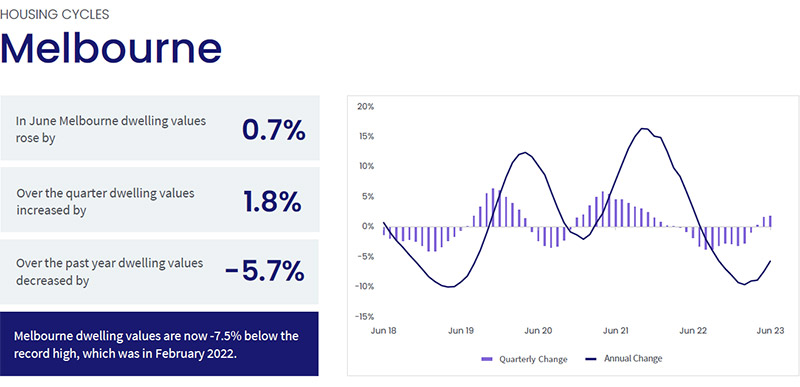
Source: Corelogic.
“With high interest rates, demand in these locations experiences a downturn while the upper quartile has experienced the most growth (+2.1 per cent) over the past quarter, as higher income earners aren’t as impacted, and with very limited quality of stock they are competing harder to secure properties in the upper end of the market.”
Government policy punishing investors
Michelle Stephens, real estate agent with O’Brien Real Estate in Carrum Downs, located south of Dandenong and 40 minutes’ drive from Melbourne’s CBD, said investors are currently thin on the ground despite Melbourne offering affordable investment opportunities.
“Investors are hamstrung by legislation around rent increases in Victoria so that has played a part in this, and government policy is making it very difficult on investors and for new builds to get through with all the red tape.”
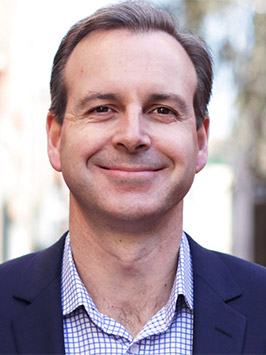
Ben Kingsley, Chair, Property Investors Council of Australia
Mr Kingsley described Melbourne as experiencing a boycott of investors, which he says was initially triggered by tenancy reforms that included 133 new amendments introduced in March 2021 that scared off investors.
“Then, the recently introduced increases to land tax, as part of the new Covid levy, has made Victoria the most expensively property taxed state in the country, according to the Parliamentary Budget Office, and far less attractive for investors, so they are looking elsewhere for their opportunities.
“Investors don’t trust the government to give them a fair go, so that buying group is taking its investment dollars elsewhere, especially with rumours circling that the Andrew’s Government is considering rental caps or freezes, which would kill off new investment into Melbourne and see a lot of investors selling up.
“Not being able to recover interest rate rise costs will mean some mum and dad investors will be forced to sell, and with other budding property investors snubbing Victoria because it’s too hard and too costly to hold properties, the story is going to be pretty dire for the state and for all renters living there.”
Rents up but yields still low
Melbourne’s rental growth remains well above average with rents up 12.6 per cent on the same time last year.
The city and has shown the strongest quarterly growth (3.9 per cent) of all capitals, where Perth was 3.4 per cent, Sydney (3.2), Adelaide (2.5) and Brisbane (2.1), while both Canberra and Hobart saw rents fall 1 per cent.
According to CoreLogic’s June Quarterly Rental Review, Melbourne lost its position as the country’s most affordable rental capital for houses over the three months to June with an average of $567 p/w, behind Hobart averaging $565 p/w.
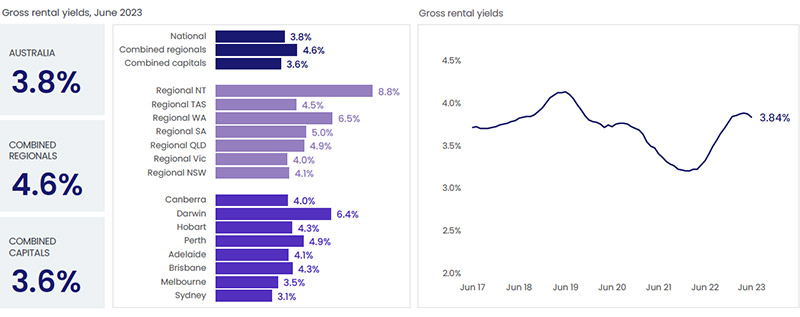
Source: Corelogic.
Melbourne’s gross rent yield in June was one of the lowest in the nation at 3.5 per cent, compared to Darwin (6.4 per cent), Perth (4.9 per cent), Brisbane and Hobart (4.3 per cent), Adelaide (4.1 per cent) and the poorest performer, Sydney (3.1 per cent).
“Rental yields are actually going to be the only real positive property story for Melbourne, with vacancy rates sitting at 0.8 per cent and in the past month rents in Melbourne increased faster than any other state as it heads into a period of chronic undersupply of rental accommodation,” Mr Kingsley said.
“This will push rents higher and improve rental yield over the next couple of years if values remain steady.”
Busy auction market
Melbourne listings were down in June compared to the same time last year by 5.5 per cent (Sydney down 3.1 per cent), but both cities fare better compared to Brisbane (-25.0 per cent), Hobart (-29.9 per cent), Perth (-18.7 per cent), Adelaide (-21.4 per cent) and Canberra (-16.8 per cent).
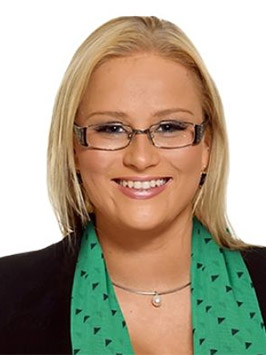
Michelle Stephens, O'Brien Real Estate, Carrum Downs, Victoria
Last weekend, Melbourne was the busiest auction market with 566 homes scheduled for auction across the city, down five auctions from the previous weekend and down 16.1 per cent on auctions held the same week last year. There was just one auction difference between Melbourne and Sydney.
“The context here is that 12 months earlier, Melbourne listings were lower than other states, so although new listings are down only 5.5 per cent year-on-year, and total listings are down 12.4 per cent year-on-year, Melbourne’s overall listings during and just after the Covid period haven’t really returned to normal listing levels compared to other states and territories, meaning they have been lower for some time, not just compared to the past 12 months,” Mr Kingsley said.
Based on agent reports, REIV auction sales and results from last Saturday (15 July) showed a clearance rate of 78 per cent from 387 auctions held, down from the previous week’s 491 properties on auction and 502 from the same time last year.
Ms Stephens agrees the pricing is strong despite the lack of properties.
“Sandhurst is a suburb that has gone against the trend and has seen price growth in the last 12 months,” Ms Stephens said.



















